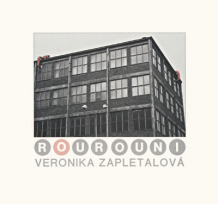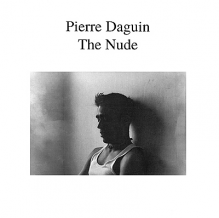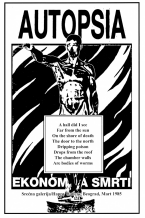| Umělec magazine 2009/2 >> The Vertical and the Horizontal of Looking East. | List of all editions. | ||||||||||||
|
|||||||||||||
The Vertical and the Horizontal of Looking East.Umělec magazine 2009/201.02.2009 Milena Dimitrova | scholarship | en cs de |
|||||||||||||
|
Vienna‘s Akademie der bildenden Künste, within the scope of a course on “Post Conceptual Art Practices,” hosted a seminar on “Writing Central European Art History,” casting a critical look at the subject, contributions from which are now available in print. Apart from its integration of socio-political themes, the seminar was quite interesting in its own right. Topics covered included modernism, contemporary art, and methodological questions connected with modernism that have occupied central and eastern European art history over the last two decades. The lectures devoted to contemporary themes presented critical approaches, interesting conclusions, and offered no methodological difficulties.
Edit András’ lecture, “An Agent That Is Still At Work” is an analysis of unsuccessful attempts at coming to terms with the past (Vergangenheitsbewältigung) in post-socialist art. Her talk addressed whether and how contemporary eastern European art, in suppressing its socialist past, only serves a new ideology. András’ argument relied on the tools of psychoanalysis, incorporating concepts ranging from trauma, suppression, and forgetting to Klossev’s theory of self-colonization. This emphasis on the theme of forgetting expressed as tabula rasa runs through the argument in Ljiljana Blagojević’s lecture on city planning in Novi Beograd. As a model she takes Novi Beograd’s surface space (Leerräume) and the various structures and functions assigned to it throughout its history. These lectures, concentrating on eastern European modernism, were explicitly devoted to methodological problems: for instance, the question as to whether art can be written about “outside the canon.” Despite the fact that exemplary cubist works from eastern Europe are no doubt (but not necessarily always) among the least known works of cubism, cubism constitutes a fundamental component of the art-historical canon. The preoccupation with eastern European modernism, it would seem, leads to an interpretive dead end centered on the concept of center and periphery in artistic production. Piotr Piotrowski’s article, “On the Spatial Turn, or on Horizontal Art History,” is dedicated in its entirety to methodological questions in eastern European art history, and provides a theoretical framework for the lectures on modernism. His theory of eastern European art historiography no longer focuses on art history in the narrow sense, but privileges a certain kind of cultural history, and at times comes to grips with post-colonial criticism. This critical scrutiny, contemporary themes notwithstanding, can be brought to bear on the work only with difficulty if at all. Piotrowski contrasts the concept and the ideal of a horizontal art historiography with a vertical, hegemonic art historiography. At the same time he asserts that the center-periphery paradigm as interpretive model cannot, in this particular instance, be surmounted: “Thus, when we ask about ‘world art history,’ we must repeat a question posed quite recently by Suzana Milevska: Can such art history exist at all outside the aforementioned geographical dichotomies? It certainly cannot.” (Text of the lecture published in Umĕní, May 2008). “On the Spatial Turn, or on Horizontal Art History” could be re-titled “Periphery and Center or Horizontal Art History,” insofar as the “spatial turn” that has been dubbed a paradigm shift can well be described as nothing more than a re-conceptualization of the notion of center and periphery. I have wondered whether a movement from the center toward the periphery or vice versa can be anything but horizontal, when one attempts to show this visually. To substitute the concept of hierarchy with that of verticality cannot be the sole significance of the “spatial turn.” The concept of course applies to the increased attention paid to eastern European art post-1989. However, by the end of the seminar, it appeared as though it might be necessary to deflect attention from the associated questions, back toward another space—the artistic space—in order for us to start working on eastern European modernism.
01.02.2009
Recommended articles
|
|||||||||||||
|
04.02.2020 10:17
Letošní 50. ročník Art Basel přilákal celkem 93 000 návštěvníků a sběratelů z 80 zemí světa. 290 prémiových galerií představilo umělecká díla od počátku 20. století až po současnost. Hlavní sektor přehlídky, tradičně v prvním patře výstavního prostoru, představil 232 předních galerií z celého světa nabízející umění nejvyšší kvality. Veletrh ukázal vzestupný trend prodeje prostřednictvím galerií jak soukromým sbírkám, tak i institucím. Kromě hlavního veletrhu stály za návštěvu i ty přidružené: Volta, Liste a Photo Basel, k tomu doprovodné programy a výstavy v místních institucích, které kvalitou daleko přesahují hranice města tj. Kunsthalle Basel, Kunstmuseum, Tinguely muzeum nebo Fondation Beyeler.
|

































 New book by I.M.Jirous in English at our online bookshop.
New book by I.M.Jirous in English at our online bookshop.
Comments
There are currently no comments.Add new comment